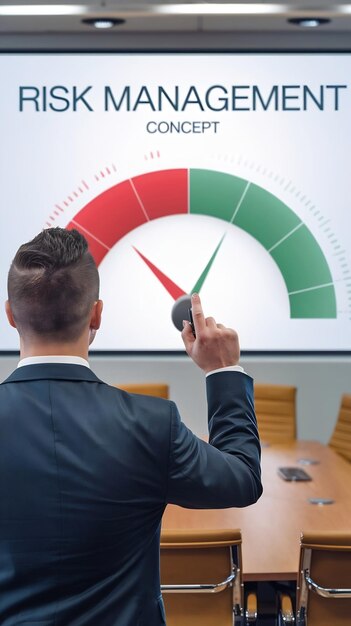Strategies for Managing Risk Exposure Effectively
Prioritize risk assessment to identify vulnerabilities within your organization. Conduct regular audits and leverage quantitative techniques to evaluate potential impacts. This transparent approach empowers decision-makers with data-driven insights.
Implement a layered risk management strategy. Combine both preventive and reactive measures to minimize exposure. Utilize risk transfer options such as insurance to protect your assets while ensuring that the organization is prepared for unforeseen challenges through robust contingency planning.
Engage stakeholders at every level to foster a culture of risk awareness. Regular training sessions can enhance understanding of risk management principles, turning each employee into a proactive participant in safeguarding organizational interests. Create clear communication channels to encourage reporting and feedback on potential risks.
Monitor and adapt strategies in real-time. Use technology and analytics tools to track risk exposure continuously. This agility ensures that your organization remains resilient and can swiftly respond to emerging risks, thereby maintaining a competitive edge.
Identifying Key Risk Factors in Your Organization
Begin with a thorough risk assessment that includes both qualitative and quantitative analysis. Gather insights from team members across departments to ensure a holistic view of potential vulnerabilities. Conduct surveys or interviews to pinpoint specific concerns that might not be immediately visible to management.
Utilize historical data to identify trends that could signal risk. Review past incidents or near misses to understand their root causes. This analysis can highlight patterns that may affect current operations and future projects.
Implement a risk register to document identified risks. Categorize these risks by severity and likelihood, allowing your team to prioritize which ones to address first. Regularly update the register to reflect new risks as they emerge.
Engage in continuous monitoring of your internal and external environment. Changes in regulations, market conditions, or technology can introduce new risks. Stay informed through industry news, webinars, and networking to recognize these shifts early.
Establish clear communication channels within your organization. Encourage employees to report any concerns without fear of repercussions. A transparent approach fosters a culture of risk awareness and promotes proactive measures.
Incorporate scenario analysis into your strategic planning. Use simulations to explore how different risks might impact your organization. This preparation allows your team to develop response strategies tailored to specific risk scenarios.
Finally, review and refine your process regularly. Set specific intervals to evaluate your risk management practices, ensuring they remain relevant and effective as your organization grows and changes. This practice will help maintain a keen eye on emerging risks and adapt your strategies accordingly.
Developing a Comprehensive Risk Assessment Framework
Implement a structured approach to risk assessment by defining clear objectives aligned with your organizational goals. Identify potential risks through a detailed survey of internal processes and external environments. Utilize checklists and brainstorming sessions with team members across departments to gather diverse perspectives.
Prioritize risks based on their potential impact and likelihood of occurrence. Use a matrix to categorize risks into high, medium, and low tiers. This visual representation aids in focusing resources where they can have the greatest effect. Regularly update this risk matrix to reflect any changes in the business environment or operational processes.
Employ quantitative and qualitative methods to analyze risks. Consider numerical data for measurable risks, while qualitative assessments can reveal the nuances of less tangible threats. Combining both approaches ensures a well-rounded evaluation.
Involve stakeholders at every stage of the risk assessment process. Their insights foster buy-in and enable a comprehensive understanding of risks facing the organization. Facilitate workshops or discussions to review findings and encourage collaboration in developing mitigation strategies.
Document all findings meticulously. Create a detailed report that outlines identified risks, their assessments, and proposed action plans. This transparency supports accountability and allows for easy reference during future evaluations.
Continuously monitor risks and adjust strategies as needed. Schedule regular reviews to reassess risks and the effectiveness of response plans. Include lessons learned during the review process to enhance future assessments.
Invest in training and resources to build a risk-aware culture within the organization. Encourage proactive communication about risks among team members. This understanding promotes an environment where everyone plays a role in risk management.
By systematically developing a risk assessment framework, your organization lays the groundwork for informed decision-making, ultimately leading to greater resilience and success.
Implementing Risk Mitigation Techniques in Daily Operations
Conduct regular risk assessments to identify potential vulnerabilities in daily operations. Utilize checklists tailored to your organization's specific activities. This proactive approach highlights areas needing attention before they escalate into significant issues.
Integrate a standardized reporting system for incidents and near-misses. Ensure that all employees can report issues without hesitation. Use this data to analyze patterns and develop targeted solutions, fostering an open culture of safety and vigilance.
Provide training sessions focused on risk management techniques. Equip employees with tools and knowledge relevant to their roles. Practical simulations help reinforce lessons, making them easier to recall during real-world scenarios.
Implement technology for monitoring and analysis. Utilize software solutions to track performance metrics and risk indicators continuously. Data analytics can reveal trends, enabling timely interventions and improved decision-making across departments.
Establish clear communication channels. Ensure that all team members understand their responsibilities related to risk management. Regular meetings to discuss risks and mitigation strategies promote collaboration and collective accountability.
Revise and update emergency response plans regularly. Ensure all employees are familiar with procedures in the event of a crisis. Conduct drills to enhance readiness and confidence, minimizing panic and confusion during actual emergencies.
Encourage feedback from staff about current risk management strategies. Engage them in discussions about challenges they face. Incorporating their insights can lead to innovative solutions that enhance day-to-day operations.
| Technique | Description | Benefit |
|---|---|---|
| Risk Assessments | Systematic evaluation of potential risks | Early identification of vulnerabilities |
| Standardized Reporting | Formalized method for reporting incidents | Reduction of future incidents through analysis |
| Training Sessions | Workshops on risk management techniques | Enhanced knowledge and preparedness |
| Technology Integration | Use of software for tracking and analytics | Data-driven decision-making |
| Communication Channels | Clear pathways for sharing information | Improved teamwork and accountability |
| Emergency Plans | Well-defined procedures for crises | Increased readiness and reduced panic |
| Staff Feedback | Employee insights on risk management | Gaining practical solutions from experience |
Regularly evaluate the effectiveness of implemented techniques. Make adjustments based on feedback and new data. This adaptability will enhance your organization's resilience and promote a culture focused on risk awareness and prevention.
Monitoring and Reviewing Risk Exposure Regularly
Schedule regular risk assessments to stay informed about changes in your risk exposure. Aim to conduct these reviews at least quarterly, or more frequently for high-risk areas. This will ensure that you can respond to emerging threats proactively.
Implement a structured risk reporting system. Utilize specific metrics such as risk likelihood, potential impact, and mitigation effectiveness. Regularly update stakeholders on these metrics to maintain transparency and facilitate collaborative decision-making.
Use technology and automation tools to streamline data collection and analysis. Software solutions can track risk indicators in real-time, providing instant notifications of significant changes. This allows for timely adjustments to your risk management strategies.
Hold dedicated risk management meetings that involve key team members across departments. This fosters a holistic view of risks and encourages diverse perspectives on risk evaluation. Use brainstorming sessions to identify new potential risks and refine your existing strategies.
Establish key performance indicators (KPIs) to measure the effectiveness of your risk management efforts. Consider metrics such as the percentage of risks that are effectively mitigated or the reduction in risk-related incidents over time. Review these KPIs in your regular assessments to gauge progress.
Encourage a culture of openness regarding risk within your organization. Allow team members to report potential risks without fear of repercussions. This can uncover hidden risks and improve overall risk awareness across all levels of the organization.
Document all findings and decisions from your reviews meticulously. Maintaining detailed records assists in tracking the evolution of risks and the effectiveness of mitigation measures over time. This documentation also provides a valuable reference for future risk assessments.
Always remain adaptable to feedback. Review and modify your risk monitoring processes based on insights gathered from your assessments and team discussions. Continuous improvement should be part of your risk management framework.
By committing to consistent monitoring and regular reviews, you enhance your ability to manage risk exposure effectively, leading to more confident decision-making and sustained organizational success.
Engaging Stakeholders in Risk Management Processes
Involve stakeholders early in the risk management process. Conduct workshops where you can brainstorm potential risks and gather diverse perspectives. This collaboration enables a more rounded understanding of possible threats and opportunities.
Utilize surveys or questionnaires to gather input from stakeholders who may not be involved in every meeting. This approach can capture insights from a broader audience and increase buy-in when decisions are made.
Clear communication is key. Regularly update stakeholders on risk assessments and management strategies through newsletters or dedicated meetings. This keeps everyone informed and demonstrates transparency.
Create dedicated roles for stakeholders in the risk management framework. Assigning specific responsibilities, such as risk champions, can help maintain engagement and accountability throughout the process.
Use visual aids, such as risk heat maps, to present data in an easily digestible format. These tools clarify risk levels and make discussions more productive.
Encourage feedback on risk strategies and be open to suggestions. Engaging stakeholders in the evaluation process fosters a sense of ownership and commitment to the outcomes.
Recognize and celebrate contributions from stakeholders. Acknowledging their efforts in addressing risks reinforces their importance in the process and motivates continued involvement.
By integrating stakeholders into the risk management process, organizations can enhance resilience against uncertainties and ensure more informed decision-making throughout their operations.
Leveraging Technology for Enhanced Risk Analysis
Implement predictive analytics to identify potential risks before they materialize. Utilize historical data to build models that forecast outcomes, allowing proactive adjustments to strategies.
Incorporate machine learning algorithms to improve data processing. These algorithms identify patterns and anomalies within vast datasets, providing deeper insights into risk events.
Utilize integrated risk management software to centralize data collection and reporting. This streamlines processes and enhances collaboration across departments, ensuring all stakeholders are informed of potential risks.
Enhance scenario analysis through simulation tools. By creating various hypothetical situations, organizations can assess potential impacts and adjust strategies accordingly.
Adopt dashboard tools for real-time monitoring of risk factors. Visual representations of risk metrics facilitate quicker decision-making and allow teams to respond swiftly to emerging threats.
Leverage cloud technology for secure data storage and accessibility. This ensures that risk data is consistently available and protected, regardless of location.
Finally, invest in cybersecurity measures. Protecting sensitive risk assessment data from breaches is fundamental to maintaining trust and ensuring compliance.






